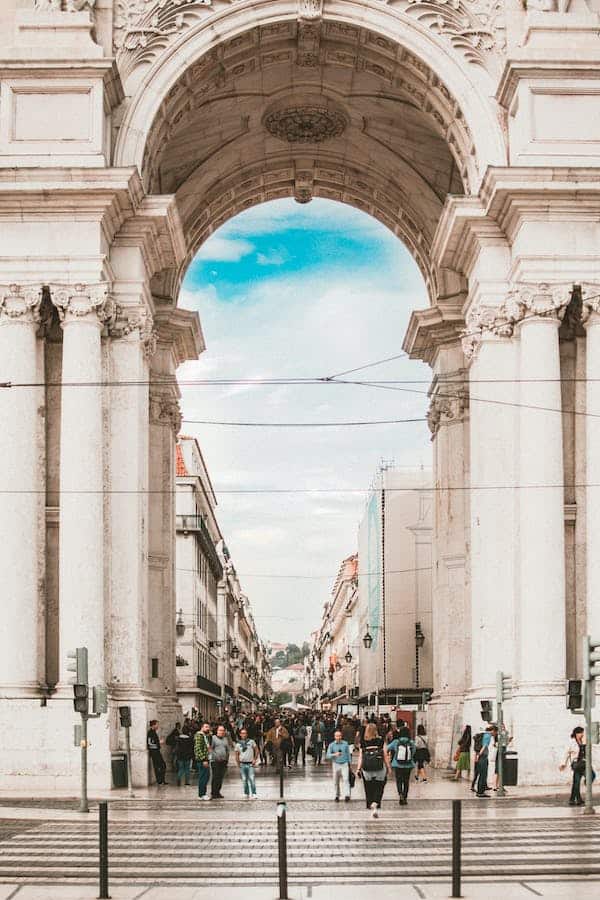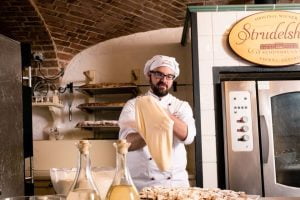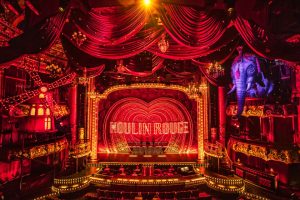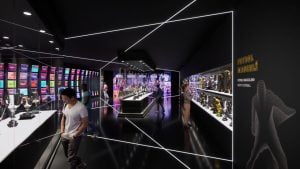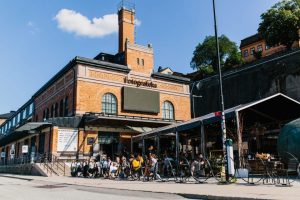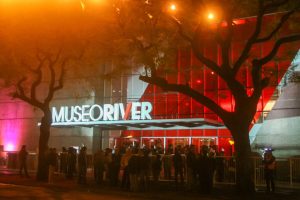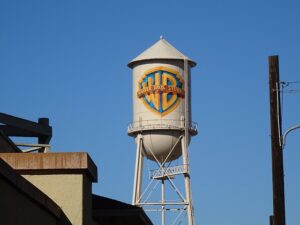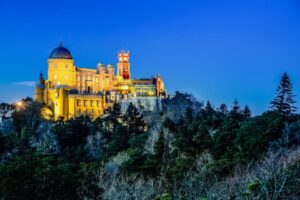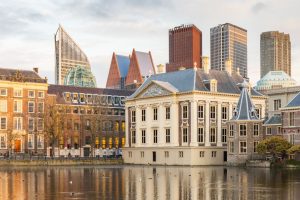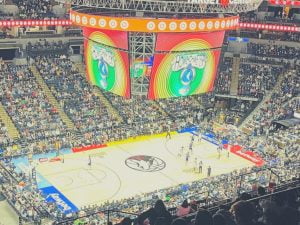The city of lights of Portugal - Lisbon
This is not Rome, and certainly not Madrid, definitely not Paris and most of all not London... This is a different city. With a different charm, a different air and a different color... This is a city that you don't come across every day, that hasn't been plowed over from all directions and yet, you easily fall in love with it. This is Lisbon.
"Lisboa" as the locals call it, the capital city of Portugal, has become particularly popular in recent years. In particular, for the Israelis - it got on the map with the increase in the number of direct flights to it from Tel Aviv, as well as with the opening of its doors for the recipients of Portuguese passports.
Lisbon is not a typical European capital city, it offers plenty of recommended attractions, it amazingly combines modernity and authenticity and it simply touches everyone, at every age and at every stage.
A trip to Lisbon can be ideal as a jump for three or four days on the weekend, or as part of a larger trip throughout Portugal that combines several days in the city.
Chiado – Chiado
Chiado is Lisbon's downtown, a colorful neighborhood and a bohemian center full of people that combines a business center, entertainment, shopping and colorful and spectacular houses that you can't stop looking at.
The city of Lisbon is built on seven hills, and therefore around every corner hides a beautiful view of the city, while in the Shiado area it is recommended to visit the observation deck Santa Catarina - (Santa Catarina).
The Chiado district is the favorite shopping area of the city's residents, where you can find a winning combination of fashionable designer boutiques, prestigious and well-known clothing stores and traditional shops with a taste of the past, most of them concentrated on Rua Carmo and Rua Garette. In Portuguese - street - (Rua).
In addition to fashion and design stores, there are also many bookstores and unique niche stores.
The district has a successful shopping center, Armazend de Chiado, with 54 fashion and cosmetics stores.
The district is full of cafes, worth stopping by to rest your hands full of bags, including the mythical cafe Cafe A Brasileira and the legendary patisserie Confeitaria Nacional famous for the traditional pastries sold there. (It is definitely recommended to visit the various bakeries)
In addition, Chiado is also full of small and surprising squares, the most famous of which are Praça Luís de Camões and Largo do Carmo.
In a woman - Baixa
Bustling pedestrian streets from the 18th century, classic cafes and large and picturesque European squares - this is the Baixa district, also known as Lisbon's Downtown.
A bit of history about the area and the Baisha in particular - in 1755, the worst earthquake ever recorded in Europe hit the city of Lisbon, and as a result, the city was washed away by terrible tsunami waves.
Most of the city was completely destroyed, and the district that was hit the hardest was the Baisha district, as it is flat and located right on the bank of the Tagus River.
The word Baixa in Portuguese means "low", hence the name of the district.
The Baixa district is the pulsating and lively heart of Lisbon offering a shopping center and cafes, combining modern and old design.
The streets of Baisha, similar to the Chiado area, are full of restaurants, cafes and shopping streets, with Rua Augusta being the main one.
The most recommended way to get to the Baisha area is to go down the central avenue Avenida da Liberdade, which will lead you to a series of famous squares of the Baisha. On the way you will pass between Praça dos Restauradores, through Praça D.Pedro IV, also known as the beautiful and romantic "Rossio Square", and to Praça do Comercio, which is decorated with a statue Horse and symbolizes the city gate of Lisbon. In the small square of São Domingos, you can find a memorial with a Star of David in memory of the victims of the pogrom of the Jews of Lisbon who were murdered in 4.
The Baisha neighborhood is the flat neighborhood of the city, and believe us - this is not a given. The city of Lisbon is known as a particularly mountainous city, which means that a trip between ups and downs awaits you. But don't worry, not in the Baisha neighborhood.
As long as you are walking on the plain - a sign that you are in Baisha.
In this area you will find a high concentration of restaurants, shops and main squares, and quite a few interesting attractions:
Praça D.Pedro IV / Rossio Square
If we were to take an x-ray of the city of Lisbon - Rossio Square would undoubtedly be its heart. The square is located in the center of the center and attracts tourists and travelers from all directions.
Surrounded by a variety of restaurants, cafes, shops and street performances - Rossio Square is without a doubt the significant point of interest of the city.
The hallmark of the square are the wave decorations that decorate the floor, as well as the National Theater which is located at the end of the square, what is interesting to know is that the original name of the square is Praça dom Pedro IV, but over the years it received the nickname "Rossio" ("common property" meaning Latin).
In the center of the square you will find a statue in the image of Dom Pedro IV, the statue rises to a height of about 27 meters. Pedro IV is known as Pedro IV of Portugal, but also as Pedro I of Brazil, due to being the first emperor of Brazil in the mid-19th century.
The elevator of Santa Justa - Elevador de Santa Justa
This elevator, although reminiscent of the Eiffel Tower from Paris, is one of the hallmarks of central Lisbon. It was built at the beginning of the 20th century by a student of Eiffel, and today it attracts many tourists who wait to board it for a lovely view of the city.
It can be recognized both by looking up and by looking for the long line that stretches along the street.
The entrance ticket to the first level will cost about 5 euros, while going up to the second level is an additional cost of about 1.5 euros (if you ask us? The first level is really enough and the view is not too different).
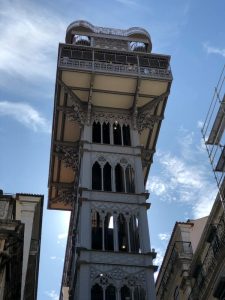
The food market "Time out Market" - Time out Market/ Mercado da Ribeira
Who among us is not a fan of the food market trend? So the food market of Lisbon was established in 2014 by the famous magazine "Time Out", under the concept of concentrating the best restaurants in the city in one place.
Upon entering the market complex, you immediately absorb the special atmosphere of all the successful restaurants, while one side of the market still remains a traditional market where fruits and vegetables are sold, on the other side of the market a modern and bustling atmosphere prevails.
In the variety of options that the market offers you will find everything from everything - cuisines from all over the world, fine alcohol and excellent desserts.
Keep in mind that the number of seats is limited and it is usually recommended to reserve a seat before ordering the food.
Comercio Square - Praça do Comercio
If Rossio Square is considered the heart of the city, Comercio Square - "Commercial Square" - is the city's gateway.
Since time immemorial, this square has been the point where the inhabitants of the city gather for any event - celebrations, demonstrations and even in tragedies, during the famous earthquake in 1755 - where everyone fled.
Comercio Square is a huge square that covers an area of about 36 square meters near the Tagus River, and during the Age of Discovery, ships used to anchor at its end to unload goods. You will recognize the square thanks to the yellow buildings that surround it, the entrance gate to the city that borders it, as well as the famous statue of King José I on horseback that stands in the center.
Augusta Gate - Arco da Rua Augusta
The Augusta Gate located at the end of Comercio Square is considered the city gate, the entrance gate is a stone structure in the shape of a triumphal arch, and it commemorates the restoration of the city after the 1755 earthquake.
It consists of 6 columns about 11 meters high and is decorated with significant figures from Portuguese history.
Today you can go up to the top of the arch to enjoy a lovely view of the city and the river.
Augusta pedestrian street - Rua da Augusta
Now that you know the Augusta Gate, you should know its pedestrian street - the Augusta shopping street.
This area of the city is relevant for the shopping enthusiasts among us, those who enjoy the European shopping atmosphere of an outdoor pedestrian mall. Zara, Benton, Barashka and more - this pedestrian street is one of the main points for a successful shopping trip in Lisbon, by the way, if someone is traveling with you who is less interested in the shopping part, send them to wait at the excellent ice cream of Amorino In the center of the pedestrian zone.
Figueira Square - Praça de Figueira
Objectively, this square loses its power by being the neighbor of the central square - Rossio.
But, on the last weekend of every month, it attracts quite a bit of attention, in that it hosts a local market called Mercado da Baixa.
By definition it is a farmer's market of cheeses, meats, fruits and sangrias.
If you are lucky enough to visit Lisbon at the end of the month, remember to add a visit to this special market, you will be able to spot the square in the center of which stands the statue of King Joao I, one of the greatest kings of Portugal in the 14th century AD. And no less important - on the corner of the square you will look for the oldest cafe in Lisbon - Confiteria Nacional
The pink street
As the name suggests - this is a pink street, the neighborhood where the street is located (Cais do Sodre) has always been considered a problematic neighborhood where dubious populations congregated... About a decade ago, the municipality made many moves to change the image of the area, and among other things, it painted the street pink to give it optimism, However, beyond the special visibility of the street, the Pink Street attracts many tourists as it is one of the centers of Lisbon's nightlife.
Visiting the street during the day may be deceiving, but those who dare to visit the place late at night will be exposed to big celebrations of crowded bars and long lines.
If you are interested in the bar scene and night life, dedicate one evening to a round of bars on the Pink Street.
(For nightlife and bars it is recommended to arrive around 01:00).

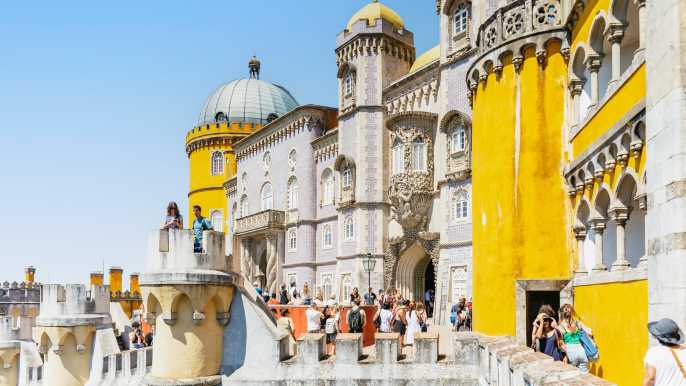
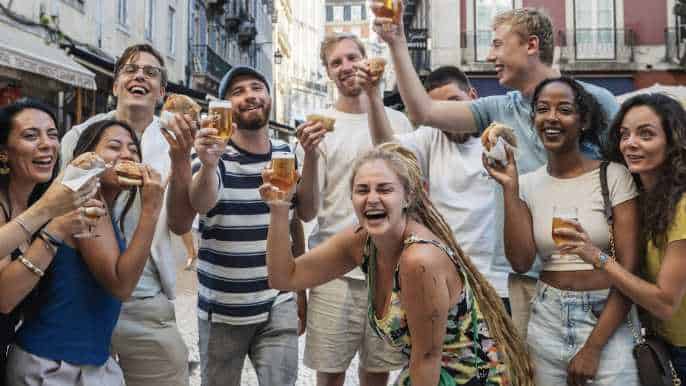

Alfama neighborhood - Alfama
The Alfama neighborhood is a romantic and picturesque neighborhood as well as the oldest neighborhood in Lisbon, the only one that survived the devastating earthquake that hit the city in 1755.
While the rest of the neighborhoods were almost completely destroyed, Alfama, the highest neighborhood in the vicinity, remained standing, if you want to feel like a local or go back in time you can stroll through the narrow alleys and on the way observe ancient buildings decorated with light blue ceramics and be impressed by the street art.
The Alfama neighborhood is characterized by narrow alleys, local restaurants on every corner, old women who will sell you cherry liqueur (Ginja) on the street and the best places to listen to Fado music, Fado is one of the symbols of Portuguese culture.
One of the well-known sites located near the Alfama district is the Sao Jorge fortress (Castelo de Sao Jorge). Today, you can climb the walls of the fortress and observe the spectacular view of the city, where an observation point offering the same view and free of charge is Miradouro da Senhora do Monte.
Bairro Alto district - Bairro Alto
As you already understood, Lisbon is famous for its lively nightlife.
One of the successful entertainment areas is Bairro Alto, the fashionable district consists of a maze of steep alleys, full of clubs, pubs, restaurants, fado clubs, galleries and unique boutiques.
The district, located at the top of a hill, can be reached in several ways: if you feel energetic and sporty, you can climb up the streets and stairs.
For those of you who have difficulty climbing, there are two other, particularly enjoyable options - to go to the top of the hill in the impressive Santa Justa elevator or to take the yellow electric train that travels along a particularly steep, almost vertical route.
It is highly recommended to walk around here during the day and be impressed by the special architecture, the picturesque alleys and a beautiful view of the rooftops of the city from São Pedro de Alcântara avenue.
This district is a very vibrant and lively area of Lisbon, the point where any average Portuguese outing begins.
Despite the fact that this is a relatively small neighborhood, there are about 250 bars located there, most of which are filled almost to capacity every evening with people who buy beer and walk around the street with it until the next bar.
Even if you are not a fan of alcohol, it is recommended to experience this area as the atmosphere is happy, the variety of bars is very wide and the cheap alcohol prices will make you fall in love with the place.
Belem district and the various attractions
The famous and ancient quarter, whose name is derived from the name of the city "Bethlehem" in Portuguese, houses other historical attractions that are worth visiting, in general it is recommended to wander around on foot to get an impression of the historical views.
In this area of the city you can find the Jeronimos Monastery.
As mentioned, the great earthquake that shook Portugal hit many places, left a lot of damage and even changed the topography in the area, Jerónimos Monastery remained standing and stable unharmed.
In the 19th century, restoration and renovation work was done on the site, and today the impressive monastery is a popular tourist attraction and a historical testimony to the culture and heritage of Portugal, since 1983 the site was declared a UNESCO World Heritage Site, mainly due to its architectural and historical value.
There is no doubt that this is an impressive building, which tells a historical story worth knowing about Portugal and is definitely worth a visit.
Next to Jeronimos Monastery lies another site associated with the city...
Torre de Belém which stands on the bank of the Tagus River in the Belem district.
The fortified tower was built at the beginning of the 16th century as an impressive sea entrance gate to the city to commemorate the discoveries of Vasco da Gama, who set out on his travels from Lisbon, as well as as part of a defense system on the banks of the river.
Its height is about 35 meters and it is decorated with nautical motifs carved in stone, from the observation deck on the top floor there is a great view of the city and of the river mouth to the ocean.
The tour of the Belém district, with its many historical sites, should be stopped at the Pastéis de Belém, the legendary bakery, which has been standing since 1837. Here you can enjoy the pastry most associated with Lisbon, Pastéis de Nata - basically, Nutella pastel but insanely delicious.
Do not give up eating this pastry at least a few times during your visit to the city, and it is especially recommended to eat it at this bakery, here it has been produced for almost 180 years according to a secret recipe, which is kept very strictly.
Address – Rua de Belém nº 84 a 92

